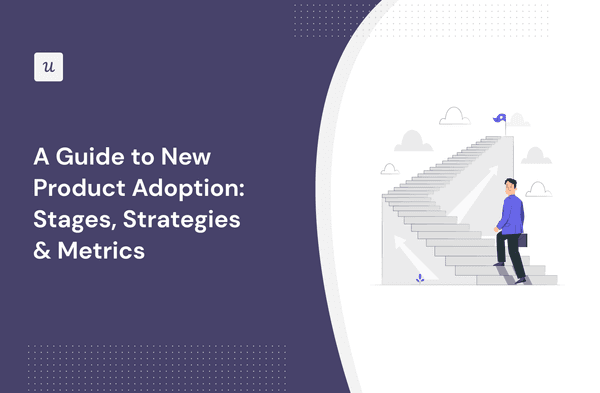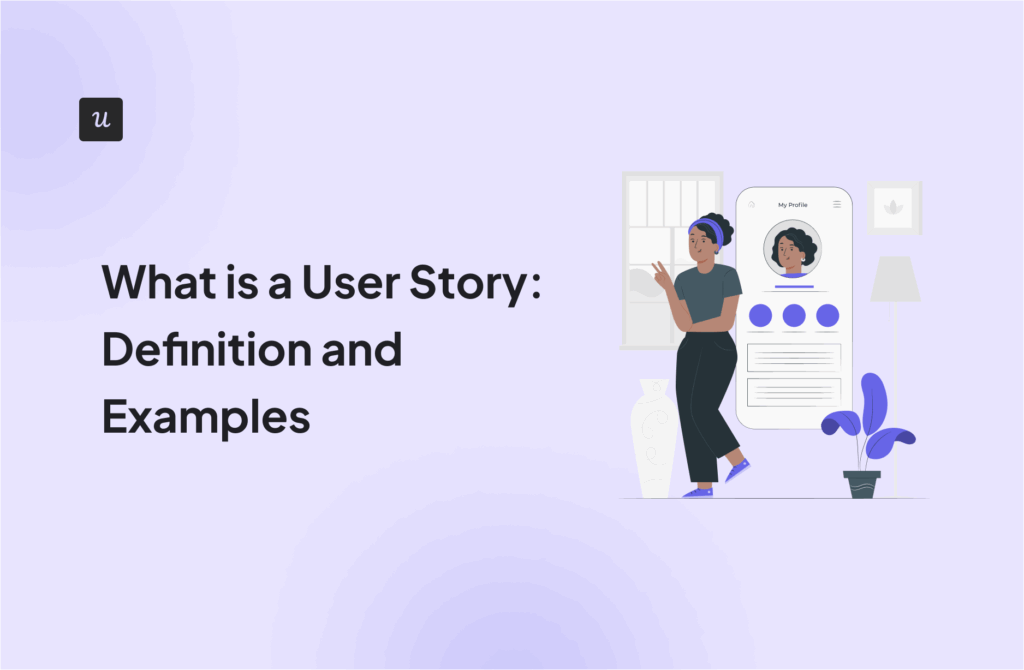
Try Userpilot Now
See Why 1,000+ Teams Choose Userpilot

What is a free trial?
A free trial is a marketing strategy where customers can use a product free of charge for a limited period of time in order to determine its value.
Free trials are very common in SaaS companies, where users want to see the outright benefits before investing in month-long subscriptions.
How does a free trial work?
There are three main types of free trials: opt-in, opt-out, and reverse.
Let’s take a closer look at each one in the sections below:
Opt-in free trial
An opt-in free trial makes it possible for users to explore the product for a limited time without the need to provide payment details.
A free trial with opt-in is the easiest way to attract a large number of trial users.
The process is simple and fast, and users feel safe because they don’t have to share sensitive details.
There are two options available to the user after the trial ends: provide payment details to continue using the product or lose access to the platform.
These are typically marketed as “no credit card information required” trials and get an average conversion rate of 18%.
The downside is that
Opt-out free trial
In opt-out free trials, users must provide their payment information upfront and will be automatically charged at the end of their trial period unless they cancel it.
This has a much higher conversion rate of 50% because prospects who are willing to commit to their payment details are clearly more interested in your product.
Reverse trial
Finally, reverse trials are where non-paying customers of a freemium product are temporarily given access to its premium features. At the end of the trial, they are downgraded back to the freemium version of the product.
This strategy dictates that, once a user has already experienced the benefits of a paid subscription, they’ll be less likely to return to their freemium plan. After all, it’s harder to lose features you’ve already used than to miss out on features you’ve never tried.
What are the benefits of free trials?
There are three main benefits of free trials:
- Lower customer acquisition cost (CAC). Most free trials lower the average customer acquisition cost for a SaaS company. Free trials work by providing immediate access to prospects instead of going through the time-consuming and expensive process of closing sales through demo calls.
- Higher conversion rate. Users are far more likely to pay for a product if they’ve already used it and experienced the value it provides firsthand. Manually vetting a product takes the guesswork out of the equation and reduces risk for the customer.
- Increased credibility. It’s easier to build user trust when you provide value (in the form of access to your product) before asking them to pay you. Making them part with their cash upfront could be perceived as a lack of faith in your product’s ability to solve their problem in the long run.
When should you use the free trial model?
There are a few key scenarios where you should deploy a free trial model:
- High-cost, low complexity. If you have a product that’s simple but relatively expensive, then having a free trial offer can help you justify its cost. Because the product’s complexity is low, trial users will immediately be able to understand how the product works and why it’s priced that high.
- Narrow customer base. If your customer base is narrow and you don’t have a large addressable market, then offering free trials can help you acquire market share. This is especially important for SaaS companies seeing declining growth due to a lack of prospects to market to.
- High acquisition costs. Finally, if you have high customer acquisition costs, then you could seek to reduce that through the use of a free trial. This reduces the overhead you’d encounter with other acquisition methods, such as outbound sales or paid advertising.
What’s an optimal free trial period?
The vast majority of free trials range between one week and two months. There are just a few examples of free trials that last longer than 7-60 days.
That said, the length of the free trial should be based on how complex the product is and how long it will take new users to experience value.
Usually, to decide on the trial length, companies identify the activation points in their product and the actions needed to reach them, then assess how long it will take for users to complete those key steps.
The most common free trial length for B2B SaaS companies is 14 to 30 days.
How to convert free trial users to paying customers
Generating trial signups is one thing but getting those users to convert before the free trial ends is another beast entirely.
Let’s explore some strategies for making this happen!
Simplify the free trial sign-up process
Optimizing your signup page design will help you get more signups and also contribute to increased free trial conversion rates.
For instance, offering single sign-on (SSO) through Google can take out the repetitive boring part of setting a password and instead help users get into the product in no time.
Furthermore, you should keep the number of fields to an absolute minimum to reduce friction and avoid overwhelming users. Focus on collecting the most essential information as you’ll have other opportunities to collect data once the user actually gets inside the product.

Create a personalized onboarding process for free trial users
Onboarding personalization makes the product experience more engaging and relevant for users which accelerates their value realization process as a result.
The best way to start personalizing onboarding from the get-go is to show new users a welcome survey right after they create their accounts.

You can then segment trial users based on their survey responses to ensure they only see checklist items, walkthroughs, and flows that are relevant to their use case.
This can reduce UI clutter and ensure they engage with the in-app guidance that actually matters to them.

Guide new users towards activation with onboarding checklists
Speaking of checklist items, user onboarding checklists can improve user activation by showing them the next step so they never get stuck. You can even personalize the items on these onboarding checklists based on the jobs to be done by the user.
In general, it’s best to pre-load the checklist with one task that’s already been completed. This capitalizes on the Zeigarnik effect — a tendency for people to remember unfinished/interrupted tasks — and makes it more likely for users to complete all the items on their checklist.
Lastly, adding a progress bar will help users track how far along they are and motivate them to keep going. This avoids situations where onboarding flows seem to drag on without the user having any idea of how close they are to finishing it.

Use interactive walkthroughs to shorten the learning curve and TTV
Another way to increase your trial-to-paid conversion rate is to use interactive walkthroughs instead of linear product tours.
This helps users learn by doing and provides step-by-step guidance instead of dumping all the information on them at once.
This way users actually adopt a feature and can successfully use it to reach their goals instead of just reading about it.

Trigger contextual upgrade messages for free trial users
Timing is everything when it comes to upsell prompts within free trials. As such, these messages should be triggered at high-intent moments when users are most likely to buy.
A prime example is how Loom prompts upgrades once users hit their 5-minute recording limit to ensure they’ve already received value from the product and are ready to expand.

How to optimize your free trial strategy with Userpilot
Getting paid customers before the trial period ends is just as much about which tools you use as it is about which tenets you follow.
The final sections below will go over how you can leverage Userpilot to get more users to activate and convert before the end of their trial.
Use funnel analysis to find friction in the free trial conversion funnel
Tracking your product funnel will help you see the drop-off points where users get stuck and further investigate these points using a mix of qualitative research methods, with the ultimate goal of removing these obstacles.
For instance, if you see a high drop-off rate after users interact with a particular feature, then you could investigate further through user interviews.
Then, if you find out users can benefit from additional guidance there, you can create interactive walkthroughs to improve the user experience.

Analyze product usage to identify your most valuable features
To optimize your free trial strategy with Userpilot, leverage the Trends Report to track how trial users engage with key features over time. By analyzing which features trial users adopt most frequently and identifying points where engagement drops, you can tailor your in-app guidance and messaging to highlight your product’s most valuable capabilities. This data-driven approach helps you focus onboarding efforts on features that drive conversions, address friction before trial expiration, and ultimately increase the likelihood that users upgrade to paid plans. Continuous monitoring with the Trends Report ensures you refine your free trial experience based on real user behavior and maximize its impact.
Experiment with different lengths and optimize your free trial period
Userpilot allows you to compare conversion rates across every trial and find the duration that results in the most conversions.
You can use Userpilot’s funnel analysis feature to ascertain the ideal trial period. Create the funnel chart for your activation events and then view on which days free trial users convert the most.

Conclusion
Free trials are beneficial for both SaaS companies and their customers. They allow companies to reduce their acquisition costs while giving customers the option to experience the product value before investing in it.
Ready to start optimizing your free trial strategy for maximal success? Get a free Userpilot demo and our team will guide you through it!







